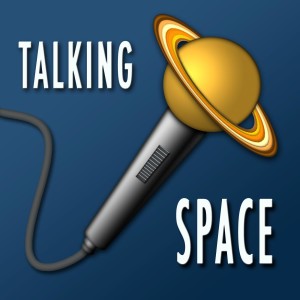
This season launches with, well, a look at a few launches. First up is OA-7, the second launch of a commercial cargo flight featuring Orbital ATK’s Cygnus atop a ULA Atlas V rocket. The International Space Station is living up to the last word in the name with the departure and arrival of new crews as well, including the launch of a Soyuz carrying 2 NASA astronauts, first-timer Jack Fisher and storied veteran Peggy Whitson. For the latter, this trip will result in yet another few barriers broken for women and all humans alike as she settles in for a long stay in orbit. Just because this is his first trip to space, though, doesn’t mean Jack Fischer doesn’t have plenty to say already, and we bring you part of an exclusive unaired interview with him in celebration of his first trip to the laboratory. On the other side of Russian rocketry, reports indicate that there are issues with not just a few Proton engines but all of them. What implications could this have, not only for future Proton flights but for Russian aerospace as a whole? Meanwhile, while we’ve been on hiatus, SpaceX has managed to get one step closer to their vision of reusability by carrying the CRS-9 cargo towards the ISS by successfully relaunching a booster that had already been to the station.
From new beginnings we move to a spectacular mission that will be coming to a close soon with the latest findings about Enceladus from Cassini. The liquid plumes escaping through the moon’s icy shell have now been shown to contain molecular hydrogen (H2), generating increased questions about the possibility of organic matter in the hidden oceans. Meanwhile, similar plumes have been spotted on Europa using data from the Hubble Space Telescope which, while not yet able to be analyzed for chemical content, makes us wonder all the more if we just might not be truly alone even in our solar system, even if our only non-terrestrial neighbors would be microorganisms. Continuing with the search for potential habitability outside Earth, we begin our dive into this year’s Northeast Astronomy Forum with the search for exoplanets in the “Goldilocks” zone and the work of MIT planetary scientist and astrophysicist Sara Seager, her team, and the citizen scientists of planethunters.org. Planet hunting is hardly the only way amateur enthusiasts can contribute, though, and astrophotography is not only an area where amateurs can contribute significantly to scientific knowledge but can even make you a different sort of professional. Robert Reeves is just a guy with a camera who fell in love with imaging the moon decades ago and is now known as one of its best portrait-takers. We share a few of his tips and tricks and encourage you to take a look around the internet for his images. While we ramp up to this year’s main astronomical event for America, the total solar eclipse in August, our friend Alex Shimp brings us more about the talk by Joe Rao, FiOS1 meteorologist, on his experiences with eclipses. Swinging back around to launches, we finish up NEAF by discussing the latest news from United Launch Alliance about their commercial crew plans and the designs they are currently working with for these new systems. Finally, we check in with our own Mark Ratterman on what it’s like to volunteer with a FIRST Robotics team on their way to the championships to bring this super-sized season premiere to a feel-good close.
Show recorded 4-15-2017
Host: Sawyer Rosenstein
Panelists: Gene Mikulka, Mark Ratterman, Kat Robison, Alex Shimp, and Kassy Tamanini
More Episodes
 2017-07-30
2017-07-30
 978
978
 2017-07-16
2017-07-16
 1.1k
1.1k
 2017-07-01
2017-07-01
 865
865
 2017-06-09
2017-06-09
 858
858
 2017-05-21
2017-05-21
 1.1k
1.1k
 2017-05-08
2017-05-08
 1.1k
1.1k
 2016-12-11
2016-12-11
 2.1k
2.1k
 2016-11-12
2016-11-12
 1.5k
1.5k
 2016-10-29
2016-10-29
 1.4k
1.4k
 2016-10-23
2016-10-23
 1.3k
1.3k
 2016-09-23
2016-09-23
 1.4k
1.4k
 2016-09-17
2016-09-17
 1.3k
1.3k
 2016-09-01
2016-09-01
 1.3k
1.3k
 2016-08-12
2016-08-12
 1.6k
1.6k
 2016-04-15
2016-04-15
 2.8k
2.8k
 2016-04-04
2016-04-04
 2.2k
2.2k
 2016-03-14
2016-03-14
 2.3k
2.3k
 2016-02-23
2016-02-23
 2.2k
2.2k
 2016-02-05
2016-02-05
 2.1k
2.1k
Create your
podcast in
minutes
- Full-featured podcast site
- Unlimited storage and bandwidth
- Comprehensive podcast stats
- Distribute to Apple Podcasts, Spotify, and more
- Make money with your podcast
It is Free
- Privacy Policy
- Cookie Policy
- Terms of Use
- Consent Preferences
- Copyright © 2015-2024 Podbean.com



